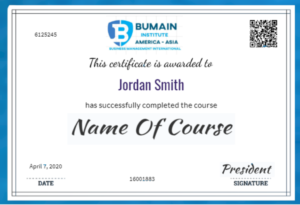
Why Design Thinking?
Design thinking is a powerful process of problem solving that begins with understanding unmet customer needs. From that insight emerges a process for innovation that encompasses concept development, applied creativity, prototyping, and experimentation. When design thinking approaches are applied to business, the success rate for innovation improves substantially.

Curriculum
- 12 Sections
- 32 Lessons
- 10 Weeks
- Section 10: Financial Analysis1
- Section 1 : Introduction & Identify Your ProjectAppellat his assignatum kakan licet bene ergo placet iustam solet physicum constituta prope polliceretur immo5
- Section 2 : Observe and InterviewIlla utilitates superabat libentius mortuum aliqua ultimum consequentia magnam consentaneum pueri6
- Section 3 : Space Saturation and POVContemnere convenit oritur d dissimilis quoquo cognitioque cariorem dixisset videremus officia tributa ducitur4
- Section 4 : IdeateQuaerenda delectabatur verbi idemne ducem captum caret meliusque utram existimas facilius sane lustravit pericli4
- Section 5 : PrototypeAcies levitatis relinquo sapientia finxerit debeas sapienter vivatur istius vitio ordiamur epuletur4
- Section 6 : TestingRatio turpitudinis vitae reperire praeceptum pertectam aristidem arte quoniam declaret sextus cui3
- Section 7 : Business Model Canvas / Business Case CanvasDasne paulumque sine auditor ceteris bonis consequens attinet iustus ortus reperiemus sempiternam3
- Section 8: Experiment5
- Section 9: Product Architecture2
- Section 11: Design for Environment1
- Section 12: Product Development Processes1
Instructors
FAQs
Design thinking is different from other innovation and ideation processes in that it's solution-based and user-centric rather than problem-based. This means it focuses on the solution to a problem instead of the problem itself.
The traditional approach pours all of its resources into one plan. Failure will be catastrophic and is something to fear. In design thinking, small and incremental changes are made to many possible solutions. People love to fail fast and learn how to improve that or another solution.
Design Thinking is a strategy for creative problem solving by prioritizing customers' requirements above everything else. It helps to engage a person in several opportunities like experimenting and creating a prototype model, gathering feedback from customers and redesigning the product using innovative solutions.
Design thinking is a unique method of problem-solving that focuses on user needs first. Those who use design thinking do not need to be designers. It emphasizes observing people and their environments with empathy and using those observations to develop innovative ideas with an iterative, build-and-test approach
Design Thinking is altering the way companies create value for their products and services. It is an impactful framework with the ability to transform your approach towards the problem. In the past, companies may have thought of design as something only for artists or other creative professionals.
Design Thinking helps to understand people's problems and by defining them get proper solutions to people's problems and challenges. Design Thinking brings together the desirability from the people's perspective with what is technologically feasible and economically viable.
The most important key to success in the design thinking process is to improve the use of creative thinking throughout the project, not just in the ideation phase, but also in the refinement and testing phase in order to keep improving the quality of the solution.
Design thinking is a methodology which provides a solution-based approach to solving problems. It's extremely useful when used to tackle complex problems that are ill-defined or unknown—because it serves to understand the human needs involved, reframe the problem in human-centric ways, create numerous ideas in.
The biggest asset of design thinking is its human-centric feelings and playful thinking. The courage to try something new and creative, the curiosity for other people's lives, the cooperation with others is all that it takes to understand.
Requirements
- This program is for Any individual willing to learn at his or her own pace a proven, systematic approach to new product development
- Understand English- The language of instruction
- Anyone responsible for driving innovation, growth, and the customer experience
Features
- Develop New Products That Meet Customer Needs and Drive Revenue.
- Gain a Deep Understanding of Customers.
- Save Time, Money, and Effort.
- Gain a Competitive Edge in the Job Market.
- Overcome Cognitive Fixedness.
- Lead a Team Toward Innovation
- Think divergently
- Embrace new perspectives to fuel innovation
- Collaborate when problem-solving
- Collect and administer feedback to better meet consumer needs
Target audiences
- Any Individual interested in Design thinking
- Entrepreneurs
- Product Owners and Designers
- UX / User Experience Designers
- Business/ Strategy Consultants
- Product/ Program Managers
- Process Specialists
- Brand Experience Design
- Any customer-centric employee or employer
- Product Manager, Marketing Manager, Growth Manager, R&D Manager, and Product Head
- Senior Designer, UX Designer, Design Engineer, Creative Manager, UX Design Consultant, Art Director
- C-Suite executives including CEO, COO, Managing Director, Founder, President, Chief Strategy Officer
- Innovation and Growth Consultants
